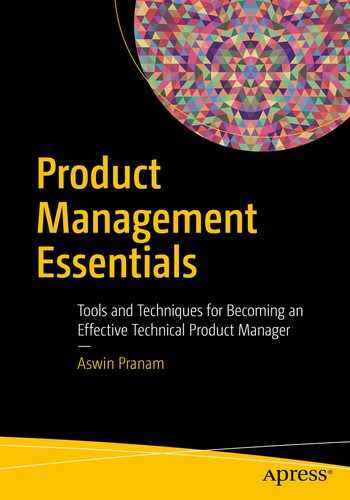Romy Macasieb is the VP of Product Management at Walker & Company Brands, where he leads the digital Product and Creative teams. Prior to Walker & Company, Romy was the Head of Product for a startup called ThisLife - a service that pulled all the photos and videos you had stored across social networks and devices, and organized them all in one place. ThisLife was later acquired by Shutterfly, where Romy built new experiences for iOS, Android, and Kindle. Romy’s professional career started off as a software developer, where he spent years as a Sr. Software Engineer working on AOL Instant Messenger. His transition into product management began with a focus on web, Mac, and mobile messaging.
Romy received his Bachelor of Science degree in Computer Science from George Mason University.
What does the term “product manager” mean to you?
Product management is about navigating teams to produce desired outcomes. In the most obvious case, the outcome is a tangible app or service that solves a problem for a specific customer. Day to day, outcomes are less obvious but ever present. Forming the right team for a project, being the dev-whisperer to gain engineering buy in, bringing in donuts for a software release, in all of these situations, the product manager is steering smaller outcomes that lead to larger ones.
How does the role of product manager differ between a startup and an established firm?
I know firsthand that in an established firm, it almost feels like you have unlimited resources.
In some of the larger organizations I worked at, I had it too good. If I had questions about how users interacted with our products, I could cobble up some bullet points and send them to the user research team. If I wasn’t sure if a feature had legal implications, I’d shoot over an email to legal and they’d help figure it out. If I needed computers or software, I’d put a request in and they’d magically show up at my desk. And let’s not get started on conferences, travel, and hotels.
When you’re in a startup, you don’t have these luxuries.
A user research team? Congratulations! You and your designers are now the user research team. Legal? Work with the legal consulting agency, but please get everything solved with minimal back and forth - time is literally money. Device goods? You either get a laptop or a desktop - not both. The conferences you attend better yield direct value and the hotels you stay at aren’t “on the strip”. In fact, if you can, stay with friends or family.
How has your role changed as you’ve gone up the ranks to VP of Product? Can you describe your day-to-day?
Since I’m in a startup, some of my day-to-day activities haven’t changed. I’m still an individual contributor for one of our products and I continue participating in stand-ups and retrospectives.
That said, some things have certainly changed. For one, I now manage the Creative Team. This means more 1:1s and meetings, but it also means more learning, greater empathy, and participating in more creative activities.
What is your biggest fear as a PM?
My biggest fear is failing my team or the customers. To keep myself from worrying, I often check my decisions against the company mission and my personal values. This way when I do fail, I know it's in good spirit and it’s something I can learn from.
What is an underrated skill or quality of a world-class PM?
“Caring”
I mean this in a very general sense. A world-class product manager needs to care about their product and their customers. They need to care about how a meeting starts and how a meeting finishes. If there is a feature that involves a lot of cross-functionality support, they need to care that their product is being handed off properly between teams. In fact, they need to care so much so that they’re almost playing "helicopter parent" at times. They need to care enough to weigh in, and care enough to let go.
What’s your approach for crafting a product requirements document (PRD)?
It really depends on the audience and product.
A product launch normally requires a lot of cross-functional collaboration so I tend to use Product Briefs. A Product Brief is usually 1-4 pages and will cover: Description, Hypothesis, Goal, Competitive Analysis, Cost, KPIs, and what the product is NOT. Once I get business alignment, I use Keynote to dive deeper into product and experience requirements.
Audience matters, though. If I’m meeting with the leadership team and I have to go into pitch mode, I’ll use Keynote. If it’s a finance-heavy initiative, I’ll use a Google Doc or Spreadsheet. And if it’s going to be mostly product and design, I may actually use Sketch.
